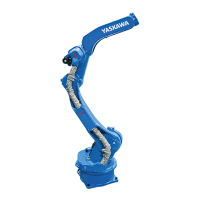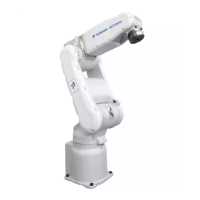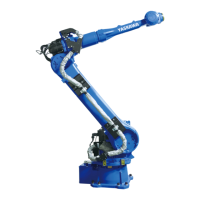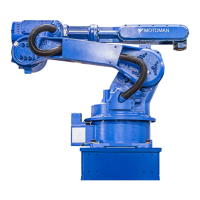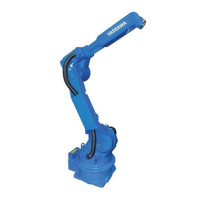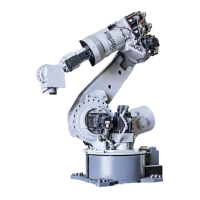11 Table of Basic Instructions
DX100 11.5 Operating Instructions
11-15
ASC Function Obtains the character code of the first letter of the character string (ASCII) of
Data2, and stores the result in Data1.
Format:ASC<Data1><Data2>
Additional
Item
Data1 B <variable number>,
I <variable number>,
D <variable number>
Data2 Character string,
S <variable number>
Example ASC B000 “ABC”
CHR$ Function Obtains the character (ASCII) with the character code of Data2, and stores
the result in Data1.
Format:CHR$<Data1><Data2>
Additional
Item
Data1 S <variable number>
Data2 Constant,
B <variable number>
Example CHR$ S000 65
MID$ Function Obtains the character string (ASCII) of any length (Data 3, 4) from the
character string (ASCII) of Data2, and stores the result in Data1.
Format:MID$<Data1><Data2><Data3><Data4>
Additional
Item
Data1 S <variable number>
Data2 Character string,
S <variable number>
Data3 Constant,
B <variable number>,
I <variable number>,
D <variable number>
Data4 Constant,
B <variable number>,
I <variable number>,
D <variable number>
Example MID$ S000 “123ABC456” 4 3
LEN Function Obtains the total number of bytes of the character string (ASCII) of Data2,
and stores the result in Data1.
Format:LEN<Data1><Data2>
Additional
Item
Data1 B <variable number>,
I <variable number>,
D <variable number>
Data2 Character string,
S <variable number>
Example LEN B000 “ABCDEF”
CAT$ Function Combines the character string (ASCII) of Data2 and Data3, and stores the
result in Data1.
Format:CAT$<Data1><Data2><Data3>
Additional
Item
Data1 S <variable number>
Data2 Character string,
S <variable number>
Data3 Character string,
S <variable number>
Example CAT$ S000 “ABC” “DEF”

